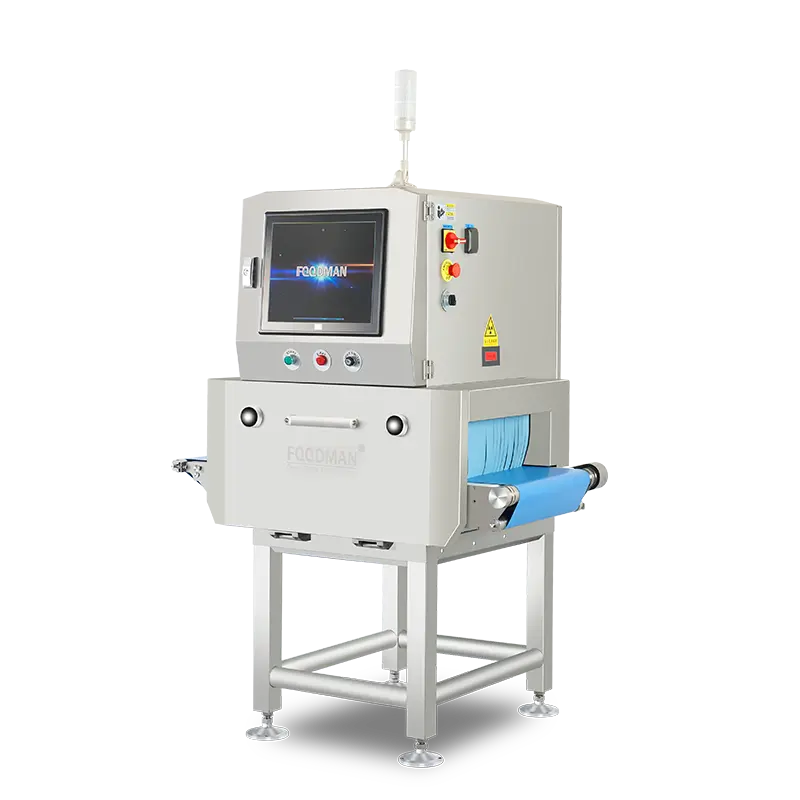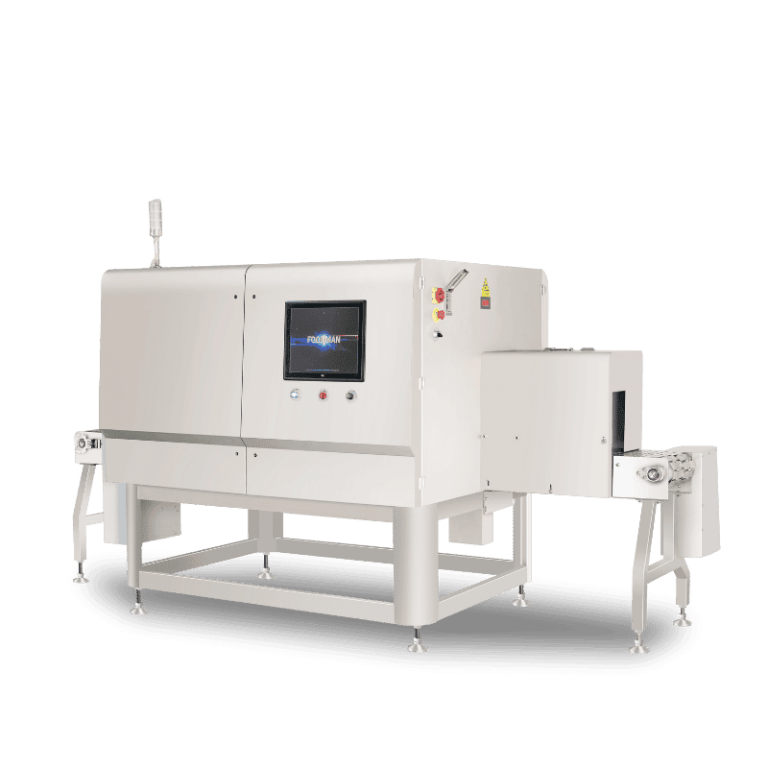Introduction
Food safety has become a top priority in the modern food industry. Food X-Ray inspection systems have emerged as a reliable and advanced solution to detect contaminants in food products. Yet, many misconceptions surrounding food X-Ray inspection systems prevent manufacturers from fully embracing this innovative technology. This blog aims to address and debunk common myths, highlighting the truth about how X-Ray inspection machines revolutionize food safety and quality control.
Myth 1: X-Ray Systems Harm Food Products
One of the most persistent myths about X-Ray inspection equipment is the belief that they harm food by exposing it to unsafe levels of radiation. This misconception is far from the truth. X-Ray inspection machine for food are designed to operate well within stringent safety standards, ensuring that food remains completely safe for consumption.
Understanding Food Safety Standards
Global regulatory bodies, including the World Health Organization (WHO), have established clear safety standards for the use of X-Ray technology in food inspection. According to food hygiene regulations, the X-Ray exposure dose for food is limited to 0.1 Gy or less, a level that ensures the quality of the food remains unchanged.
In fact, the WHO stated as early as 1980: “Foods exposed to X-rays at doses of 10 KGy or less do not present any toxicity, nutritional value changes, or microbiological risks.”
This means that the radiation levels used in food X-Ray systems are not only well below harmful thresholds but are also far lower than those used for other common applications, such as medical imaging. With such strict standards in place, manufacturers can rely on food X-Ray machine without any risk to food safety or quality.
The Truth About X-Ray Radiation Levels
Radiation doses in humans are typically measured in Sieverts (Sv), with millisieverts (mSv = one-thousandth of a Sievert) and microsieverts (µSv = one-millionth of a Sievert) being used for occupational exposure since the doses are so limited. The average person absorbs roughly 2,400 µSv of radiation each year just from natural sources.
The Foodman X-Ray Inspection System exemplifies the high safety standards of modern food inspection technology. When detecting objects, the maximum X-Ray radiation dose is 0.002 Gy, and the leakage radiation is kept at 1μSv/h or less. These values are significantly lower than the limits set by food hygiene regulations and WHO standards.
Moreover, the radiation used during X-Ray inspection is non-invasive, meaning it does not alter the nutritional value, taste, texture, or safety of the food. This ensures that the product reaches consumers in its intended state, free of contamination and without any compromise to its quality.

Myth 2: X-Ray Systems Are Only for Large Manufacturers
The idea that food X-Ray inspection systems are exclusively suited for large-scale manufacturers is a widespread misconception. In truth, modern technology has transformed these systems into flexible, accessible tools that cater to businesses of all sizes, from small startups to global corporations. Here’s how food X-Ray machine can work for everyone.
Scalable Solutions for Businesses of All Sizes
One of the biggest breakthroughs in X-Ray technology is scalability. Manufacturers no longer have to worry about their production scale being too small to justify the investment. Today’ s food X-Ray inspection systems come in a variety of configurations, from compact, entry-level models designed for small facilities to high-capacity machines for large-scale operations.
For small and medium-sized businesses, this means they can adopt progressive inspection technology without overhauling their entire production line or stretching their budget. The scalability also allows these businesses to grow and expand their use of X-Ray inspection systems over time. Whether you process a few hundred units a day or tens of thousands, there is a solution that fits your production volume and product type.
Furthermore, food X-Ray inspection systems are highly adaptable. Customization options allow businesses to fine-tune the food X-Ray machine for their specific needs, such as inspecting small packaged goods, loose bulk products, or irregularly shaped items. This versatility makes it easier for smaller manufacturers to integrate food X-Ray inspection systems into their operations seamlessly.
Affordable Options for Cost-Effective Inspections
Cost has traditionally been a concern for smaller businesses considering X-Ray inspection systems, but modern advancements have significantly reduced the price barrier. Manufacturers can now choose from a range of affordable models tailored to fit different budgets without compromising on performance or reliability.
Additionally, investing in an food X-Ray inspectionsystem often proves to be more cost-effective in the long run. Contaminant detection plays a crucial role in preventing costly recalls and lawsuits, which can devastate smaller businesses. By catching issues early, X-Ray systems not only safeguard consumer health but also protect a company’ s financial stability and reputation.
Introducing the Foodman X-Ray Inspection System for Packaged Products, the ultimate solution for ensuring product safety and quality at an affordable price. Designed to detect foreign objects such as metal, glass, stone, plastic and bone, the systems offer unrivalled accuracy and reliability for all food, pharmaceutical and light industrial applications.Its advanced imaging technology ensures accurate inspection of various packaging types without compromising production efficiency.

Myth 3: X-Ray Systems Only Detect Metals
It’ s a common misconception that food X-Ray inspection systems are only effective for detecting metal contaminants. In reality, modern X-Ray technology goes far beyond the capabilities of traditional metal detectors, offering unparalleled versatility and precision.
Multi-Material Detection Capabilities
Traditional metal detectors are limited in scope, primarily identifying metallic foreign objects. However, food x ray inspection equipment are designed to detect a wide variety of contaminants that pose risks to food safety. These include:
Glass shards: Found in jars, bottles, or other glass-packaged items.
Stones: Often present in raw agricultural products.
Plastic fragments: Common in packaging or during processing.
Bones: Particularly useful for meat, poultry, and seafood inspection.
Other dense foreign objects: Such as ceramic pieces or hardened food particles.
This multi-material detection capability is essential for modern food production lines, where contamination risks extend beyond metals. The food X-Ray inspection systems ensure comprehensive protection across a diverse range of products, from raw ingredients to processed foods.
Advanced Algorithms for Accurate Analysis
Today’ s food X-Ray inspection systems are powered by advanced algorithms and deep learning technologies that enhance their detection accuracy. These food X-Ray inspection systems can analyze and differentiate between contaminants and legitimate product components, even in challenging scenarios, such as:
Complex product arrangements: When food items overlap or are irregularly shaped.
Mixed-density products: Such as multi-layered items like sandwiches or composite meals.
High-speed production lines: Ensuring accuracy without compromising throughput.
By leveraging AI-powered image analysis, food X-Ray inspection equipment can identify even minute contaminants with remarkable precision. This capability minimizes false positives and ensures that only genuinely compromised products are rejected, reducing waste and operational inefficiencies.
Myth 4: X-Ray Inspection Systems Are Hard to Integrate
Many manufacturers hesitate to adopt food X-Ray inspection equipment, fearing that their integration into existing production lines will be complex, time-consuming, or disruptive. However, modern X-Ray systems are specifically designed to overcome these challenges, offering flexibility, efficiency, and user-friendly solutions tailored to diverse operational needs.
Customizable Solutions for Seamless Integration
The notion that food X-Ray machine are difficult to integrate is outdated. Modern systems are engineered with customization and adaptability at their core. Manufacturers can choose from a variety of configurations to match their production line requirements, including:
Line Layouts: Compact designs for space-constrained environments or modular setups for larger facilities.
Industry-Specific Features: Customizable detection algorithms and inspection settings tailored for food, pharmaceuticals, and other sectors.
Connectivity: Integration with existing conveyor belts, weighing machines, or labeling systems to create a synchronized workflow.
Additionally, these systems are built for minimal downtime during installation and commissioning. Expert support teams assist in configuring the food X-Ray machine to ensure smooth transitions, maintaining production efficiency throughout the process.
User-Friendly Interfaces and Automation
Gone are the days of complicated machine operation requiring specialized training. Modern food X-Ray inspection systems are equipped with intuitive interfaces and smart automation features that simplify day-to-day use. Key advancements include:
Touchscreen Controls: Easy-to-navigate dashboards that allow operators to set inspection parameters, view real-time data, and troubleshoot issues with minimal effort.
Automated Calibration: The system self-adjusts to ensure optimal performance, eliminating the need for constant manual intervention.
Integration with IoT: Real-time monitoring and data reporting allow seamless tracking of inspection results, enabling informed decision-making.
Quick Changeovers: Pre-programmed settings for different products make switching between inspection tasks fast and hassle-free.
These features reduce the learning curve, making it possible for operators to efficiently manage the system with just basic training. The inclusion of automated processes further minimizes the likelihood of human error, ensuring consistent performance even in high-speed production environments.
Why X-Ray Technology is a Must-Have for Food Safety
Preventing Contamination with Real-Time Detection
Food X-Ray systems detect contaminants in real-time, allowing manufacturers to reject defective products before they leave the production line. This proactive approach significantly reduces the risk of contamination reaching consumers.
Ensuring Regulatory Compliance
Strict food safety standards require manufacturers to implement advanced inspection systems. Food X-Ray technology not only meets but often exceeds these requirements, helping businesses avoid penalties and maintain compliance.
Protecting Your Brand and Consumers
By reducing the risk of recalls and ensuring product quality, food X-Ray inspection equipment protect both the consumer and the brand. Investing in this technology demonstrates a commitment to safety and builds trust with customers.

Conclusion: Embracing X-Ray Technology for Food Safety
Food X-Ray inspection systems are transformative tools for the modern food industry, addressing safety concerns and ensuring compliance with regulations. Debunking these common myths helps manufacturers realize the immense value of this technology. By adopting food X-Ray inspection machines, businesses can enhance safety, reduce recalls, and protect their brand reputation, ensuring long-term success in a competitive market.

